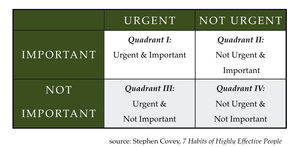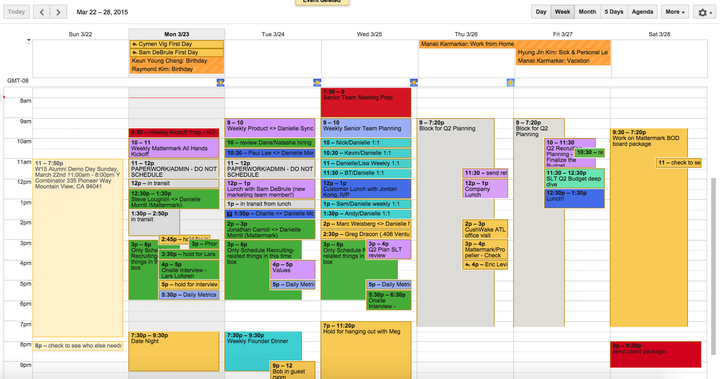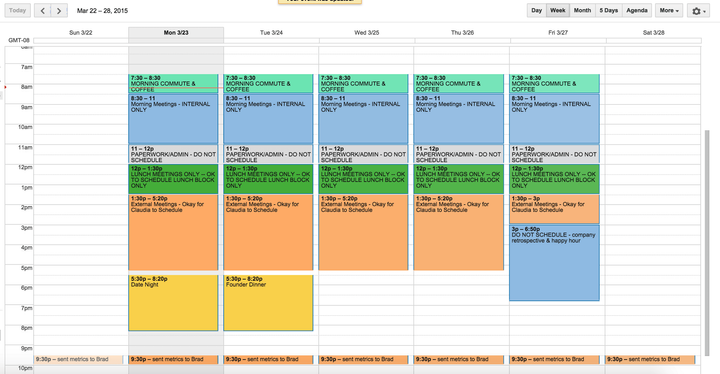
Managing Time: Execute your plan with Time Boxing
In the time management process, execution is the hardest part. When you've a detailed plan to spend your tracked time in a wise manner, the next step is to put your plan into action. And you do this by using a tool called Time Boxing.
So what is Time Boxing anyway?
It is a planning tool that's a hybrid of a calendar and a to-do list. It is somewhat like preparing schedules of meetings with yourself by setting the agenda, setting the time, and showing up on time prepared to work. The benefit of this is that you can take advantage of any efficiencies because it helps you assemble similar tasks that are either of high priority or less importance.
Most often, when we create a to-do list of tasks, we create it arbitrarily. And we blindly try to accomplish whatever is on top of the list without following or thinking about the most logical or efficient sequence. And thus the value, importance, and priority level of each task is not taken into account. So we end up from one activity to the next in a random manner.
Time Boxing helps prevent that kind of randomness and brings the following:
- Accountability. There's a best chance of making sure you'll give the right amount of time to your most important task, if you schedule in advance and figure out how long you're going to work on a task.
- Efficiency. More done in less time. How? Group similar tasks together. No change of gears between tasks.
- Healthy Pressure. You are more likely to push yourself ahead and get the task done, when you know you only have a set amount of time to accomplish that task.
- Focus. Setting time constraints will make you able to keep your attention on the task at hand.
- Time Awareness. Being on the clock will help you attain focus and be productive. And you'll less likely give away that time to other activities.
- Effectiveness. Setting a time limit will help you to supress or kill the urge to spend too much time on less important things and details and make you effective in spending more time on the bigger picture instead.
And how do you set up your time boxes?
The following is how you create your time-boxing system. And the table below that shows an example.
- Review your week.
- Prioritize the items on the list
- Estimate time for tasks
- Slot time boxes into your calendar
- Review your estimates
The example table below is taken directly from this book.
Time-boxing tool - Adapt this to any type of calendar or software program.
SCHEDULE FOR MONDAY AND TUESDAY MORNINGS
| Time | Monday | Tuesday |
| 8:00 a.m. | Task: Research strategic plan (SP) Actual time spent: |
Task: Research SP; call Joe Actual time spent: |
| 9:00 a.m. | Task: Monday staff meeting Actual time spent: |
Task: Follow up on new leads Actual time spent: |
| 10:00 a.m. | Task: Plan to delegate invoicing task Actual time spent: |
Task: Meet with Joe about his sales figures Task: Review resumes for administrative assistant position Actual time spent: |
| 11:00 a.m. | Task: Return phone calls and emal messages Actual time spent: |
Task: Work with Jane Actual time spent: |
So finally the ways to prioritize tasks
The most critcal questions to ask when setting up a daily schedule? Which task to do first, second, and so on? If we can think this through, we can prevent spending more time on things that matter less.
Prioritizing our tasks will simplify our decision-making process and we can make better decisions on a more consistent basis.
If you have ever come across or read the book 7 Habits of Highly Effective People by Stephen R. Covey, you might have seen the following two-by-two matrix:

So the thing to do is deciding if an item on your to-do list or a new task is urgent (needs to be done soon) or not-urgent, and whether it's important (will have a big impact) or unimportant. And finaly apply the following preestablished rules.
- Urgent and important: High priority tasks. The crises and deadlines to deal with throughout the week. These should always be our highest priority.
- Not urgent but important: Tasks with high impact but not time sensitive. These are the tasks to the long term goals. These tasks need to be made second priority because since they are not urgent, enough time to not devoted for them.
- Urgent but less important: Quickly need to be done tasks but they have a lower impact if not done or late. You need to consider and think about the impact not only on you but also on the your group or organization. These should be your third priority.
- Not urgent and less important: It is as the name says. Not urgent and don't require any immediate attention. Must always be of last priority.
Conclusion: The right work at the righ time. This can be achieved if you use these priorities to help guide your schedule.
The above article is an excerpt from a book by Harvard Business Review Press called Managine Time.



Comments